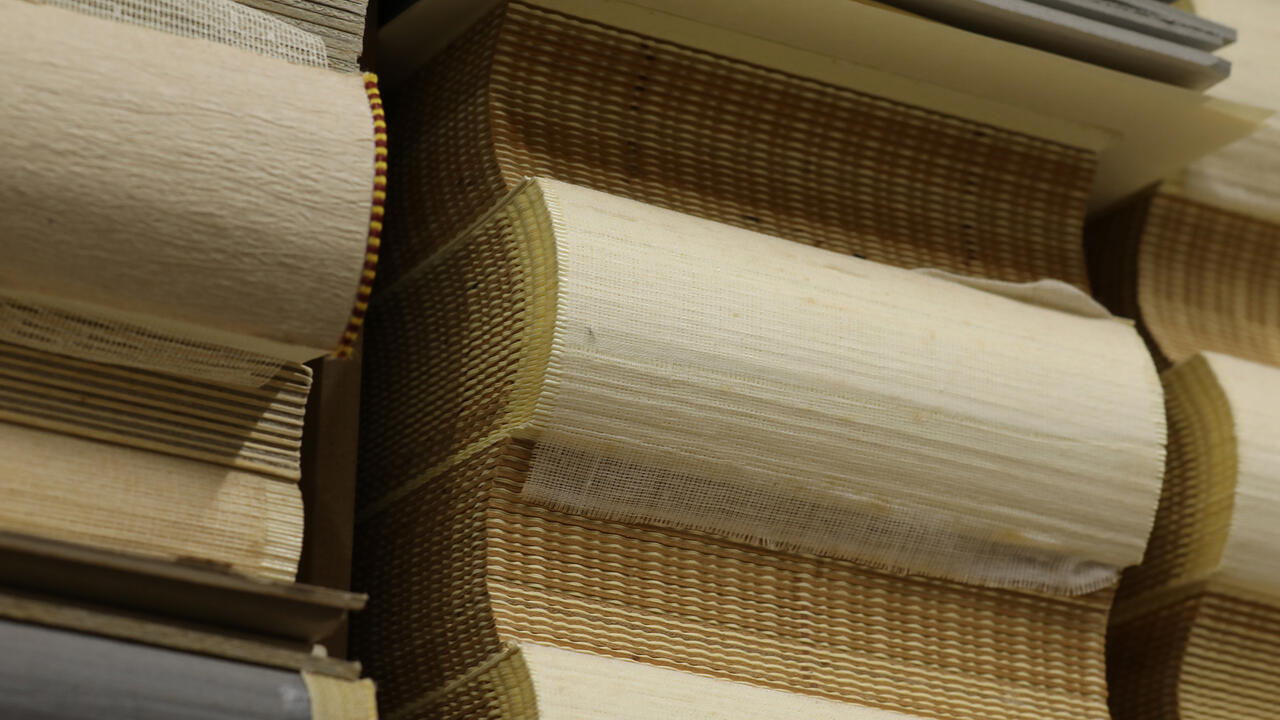Arpita Singh: Six Decades of Painting
A retrospective at Kiran Nadar Museum of Art, New Delhi, showcases the forms and themes that underpin the artist’s singular career
A retrospective at Kiran Nadar Museum of Art, New Delhi, showcases the forms and themes that underpin the artist’s singular career

In Arpita Singh’s painting Devi (1990) the goddess Durga holds up a small, black revolver. She points it to a figure that falls backward, almost out of the frame. Singh swaps out traditional symbols from the goddess’s many hands: a lemon-yellow vase with a garland of flowers instead of the single-stemmed lotus, a mango for the spinning disk with serrated edges. Singh is not a sentimental painter, though the satire in her work is soft and full of whimsy. Figures and objects are thrown up in the air where they float, twist and are frozen in a moment that could, in an instant, turn violent. ‘Submergence: In the Midst of Here and There’ at the Kiran Nadar Museum of Art in New Delhi brings together over six decades of Singh’s painting. In the sprawling oil-on-canvas Searching Sita Through Torn Papers, Paper Strips and Labels (2015), Sita and Ravana’s enchanted deer (from Valmiki’s fourth century BCE Sanskrit epic Ramayana) race across a large maze of paper, paint and text. The words ‘Sita, I, you, us’ appear in an endless loop. In the Ramayana, Sita’s encounter with the deer is where the story turns, after which the characters are plunged into war and other incidents of great despair. ‘Violence is at our doorstep,’ writes curator Roobina Karode in a note about the work. This touches a pointedly contemporary anxiety: in the lead-up to May’s general election in India, warmongering rhetoric and mob violence has the subcontinent on edge and frighteningly close to conflict. Our political landscape resembles that of Singh’s canvas: torn up and cacophonous.

Singh, born in 1937, began painting during a period in which her contemporaries were largely concerned with the nation-building project of the new Indian Republic or a return to the pastoral as a means by which to decolonize. The first thing on view upon entering the show is the transcript of a conversation between artist Nilima Sheikh and Singh, from 2003. Sheikh asks: ‘Is this, do you think, a subjectivity that women artists share […] That not having staked our ideologies in the making of art movements we are not so committed to their exclusive grammar?’ Singh resists canonization with her response: ‘Being unmindful of them is what gives us our freedom.’ Singh’s dreamscapes may be read as historical and social, but it is form that occupies her most. She is able to bend and trick material with great ease. In some paintings, she flattens oil in way that makes different colours look like collaged pieces of paper. In others, she mixes ink or oil pastel with poster paint, using very fine brushes to make print-like line drawings. Text remains a constant in the work, and Singh switches between the Latin alphabet and Devanagari. Certain objects recur: fat flowers with blooming heads the petals of which resemble the twisting coils of brain matter and sleek, obsidian fighter jets, speeding towards their targets.
Singh’s use of watercolour is perhaps most compelling of all: in an untitled work from 1985, a large cyanotype-blue and white tablecloth stretches over the scene, surreal in its handling of space and proportion. It moves downward and out of the frame, as though about to take flight. On it, ducks with spindly necks and sharp beaks swim near a tumbler full of electric-blue tulips and blood-red apples drip from the tablecloth’s chequered grid. It’s a dream sequence stripped from narrative and full of signifiers: objects that flip into, and disappear out of, the painted tableau. Space gets away from Singh, dimensions slip away.
Arpita Singh, 'Six Decades of Painting' runs at Kiran Nadar Museum of Art, New Delhi, until 30 June 2019.
Main image: Arpita Singh, What Are You Doing Here (detail), 1992, oil on board, 91 × 152 cm. Courtesy: the artist and Kiran Nadar Museum of Art, New Delhi






















